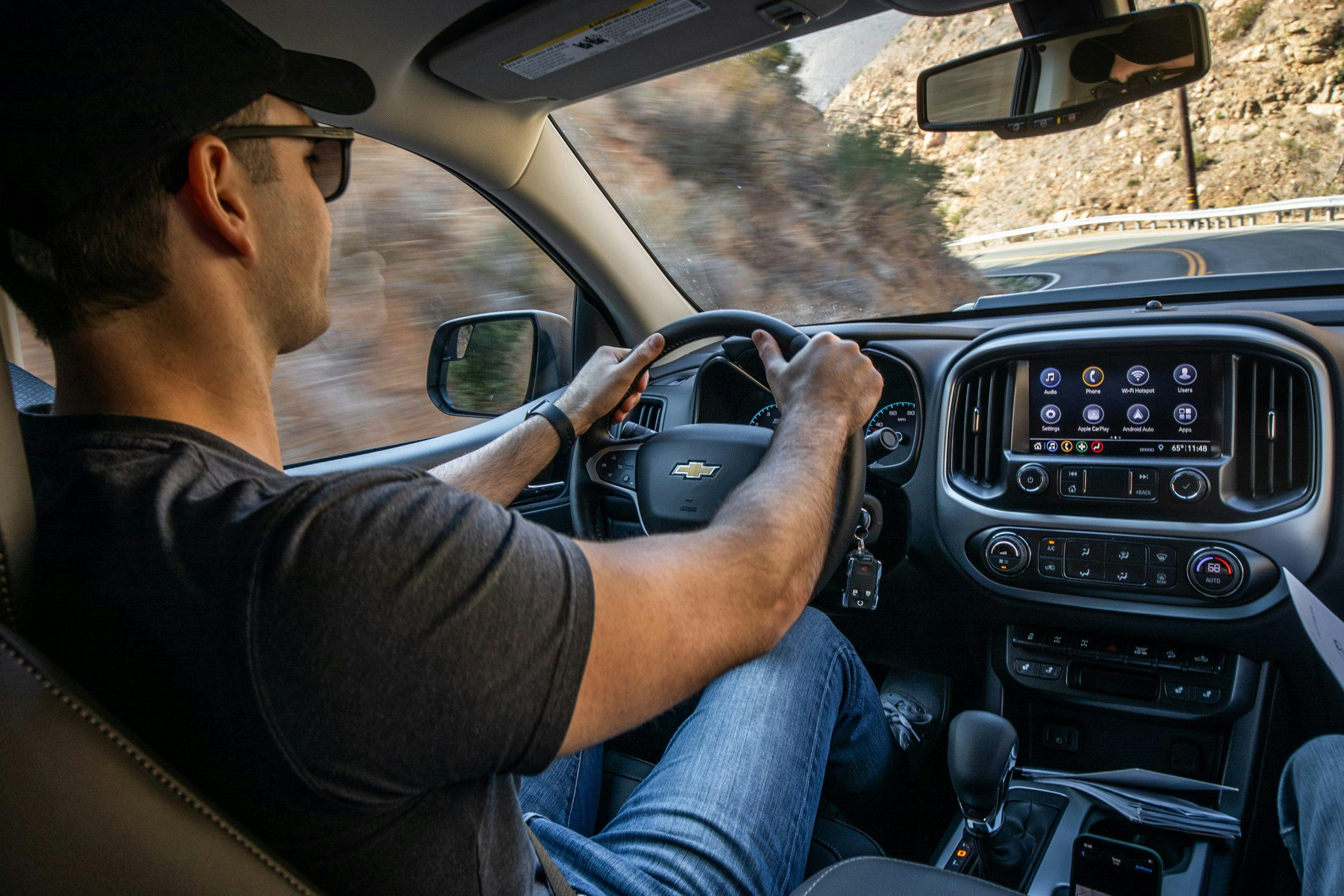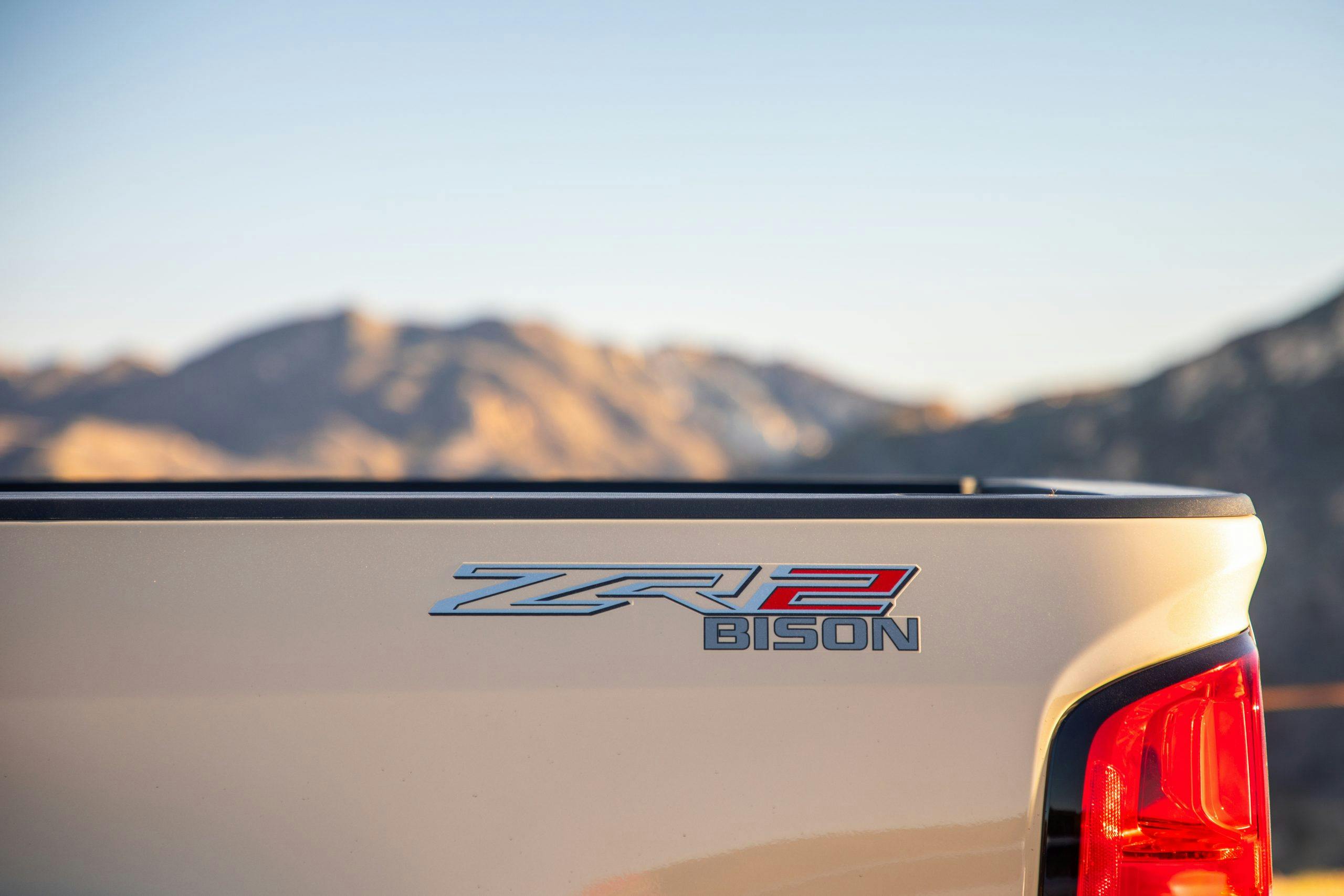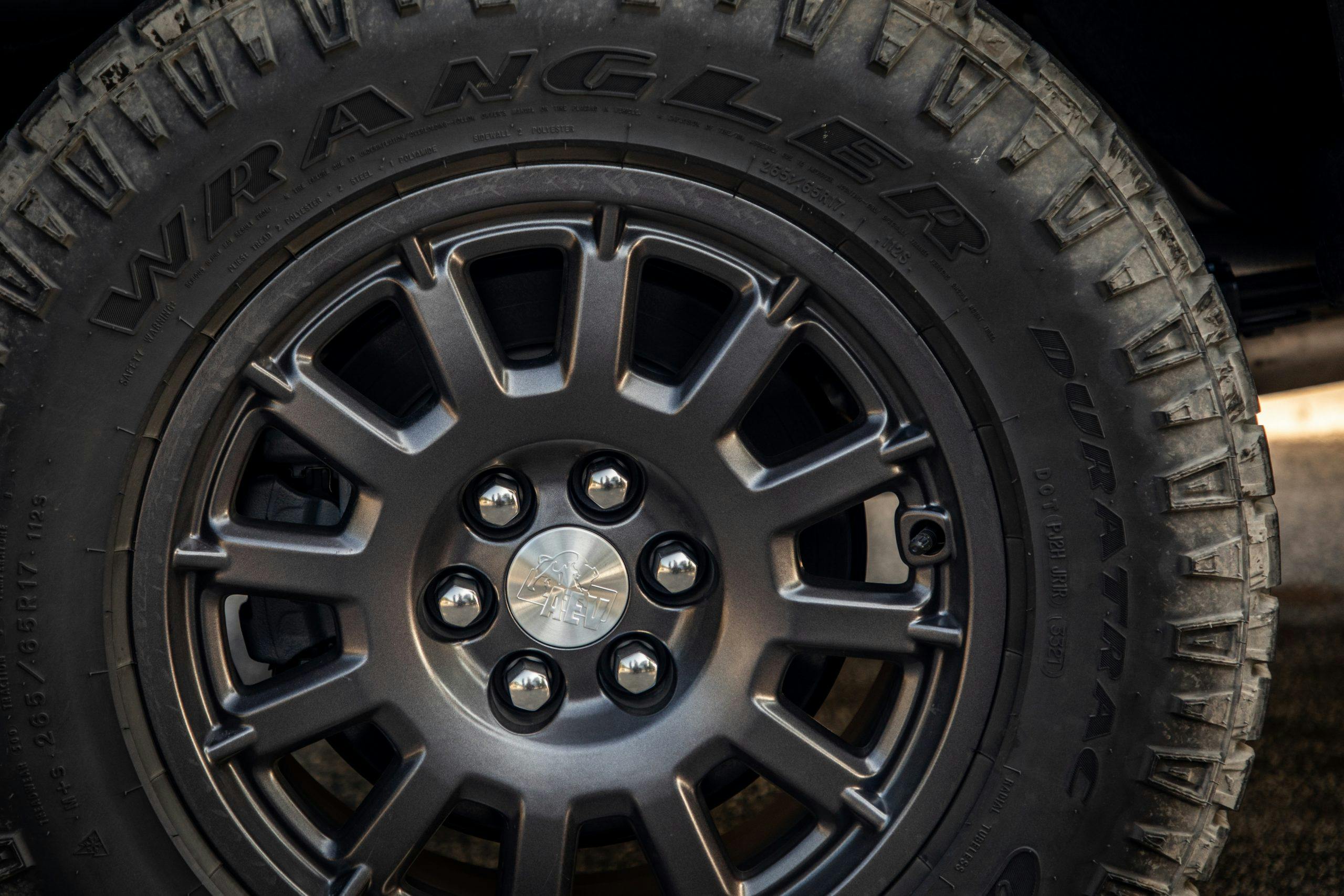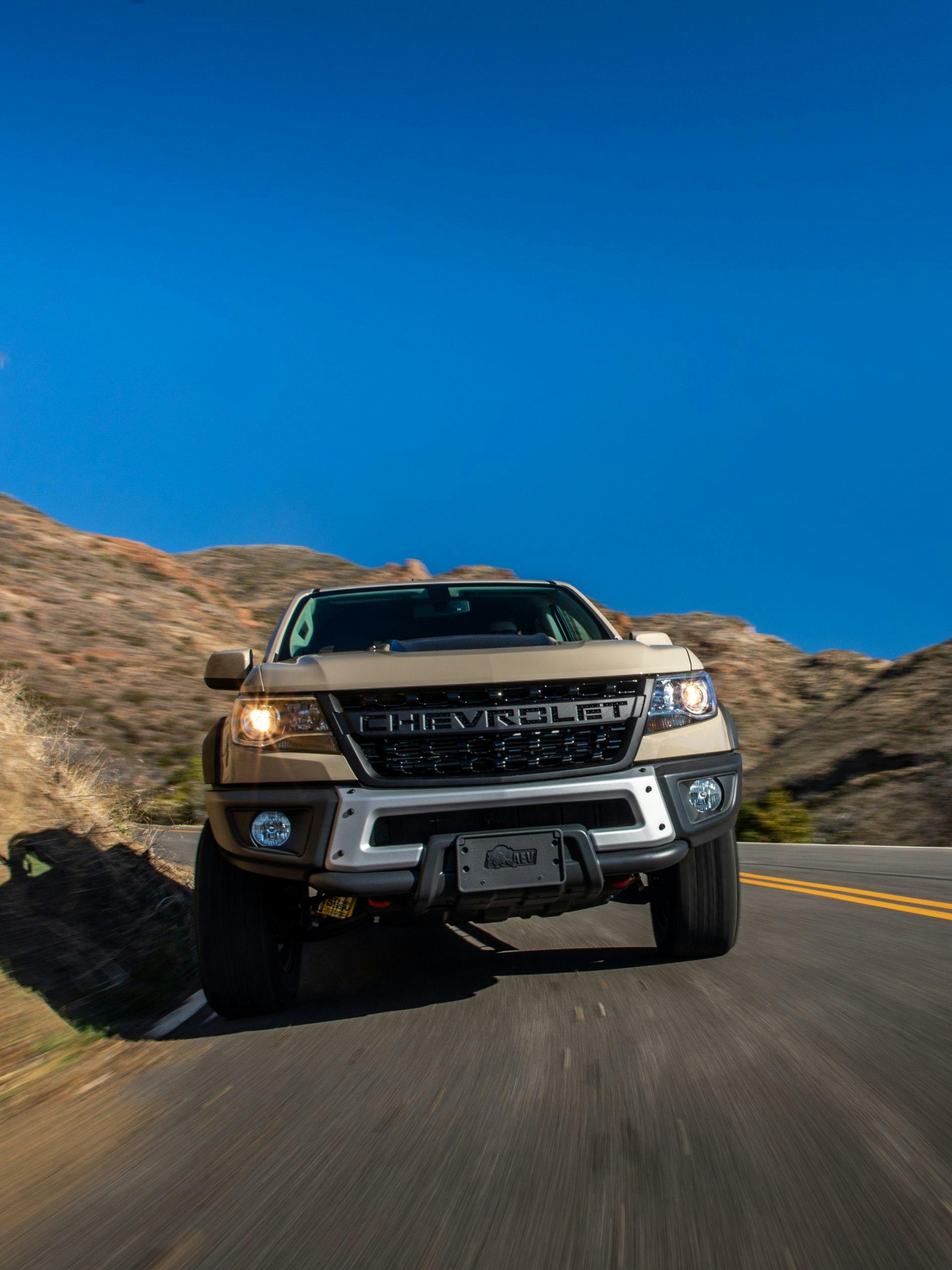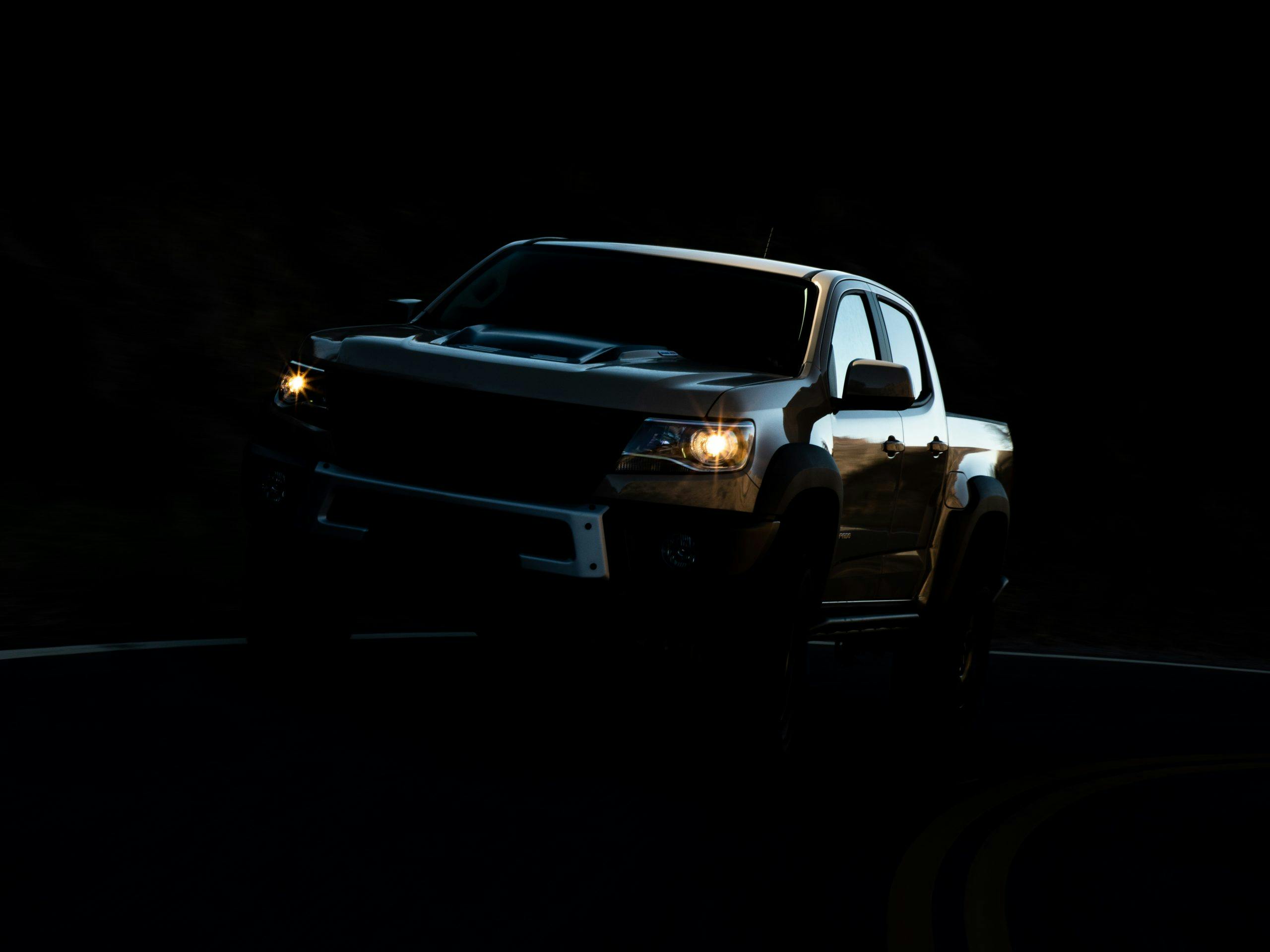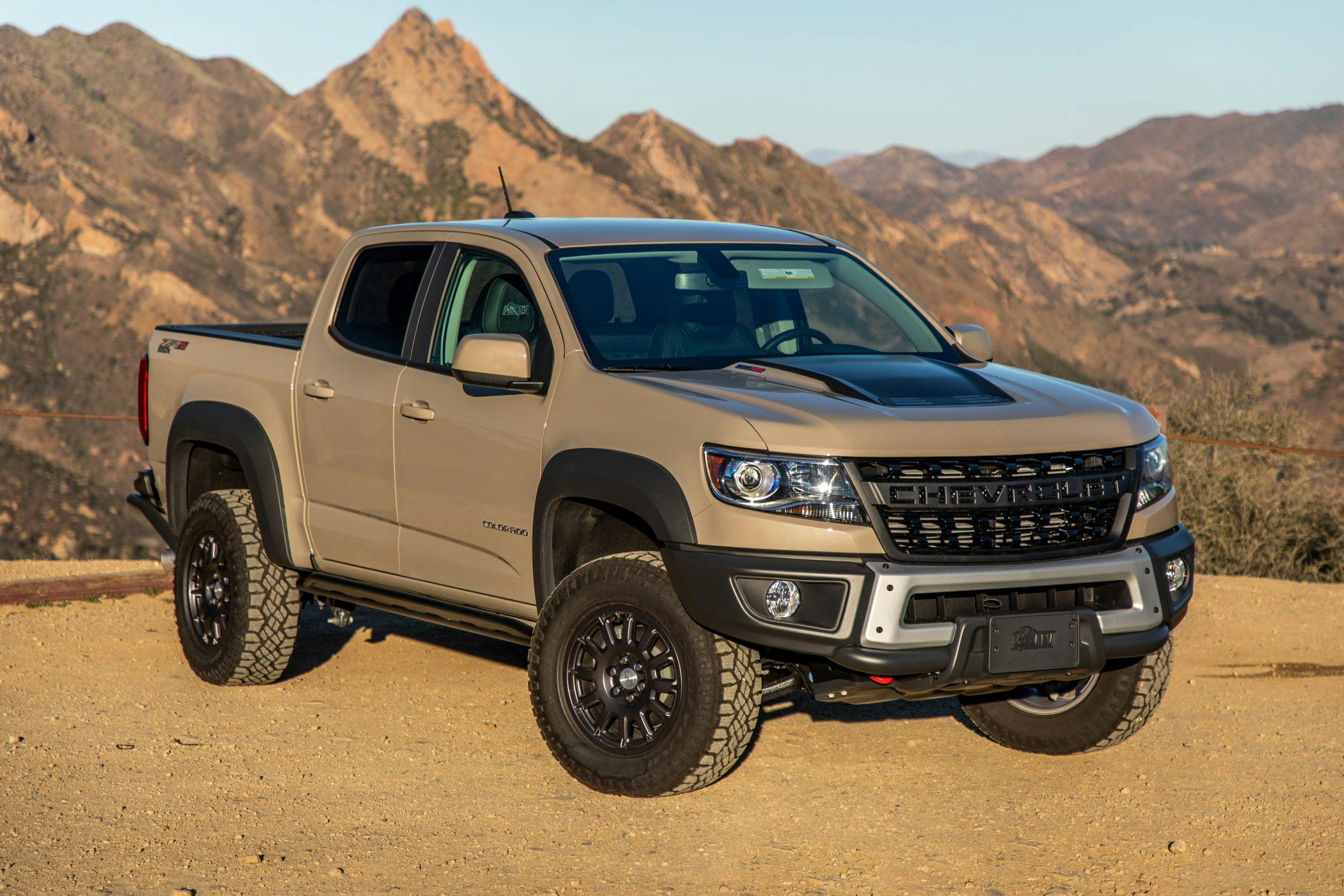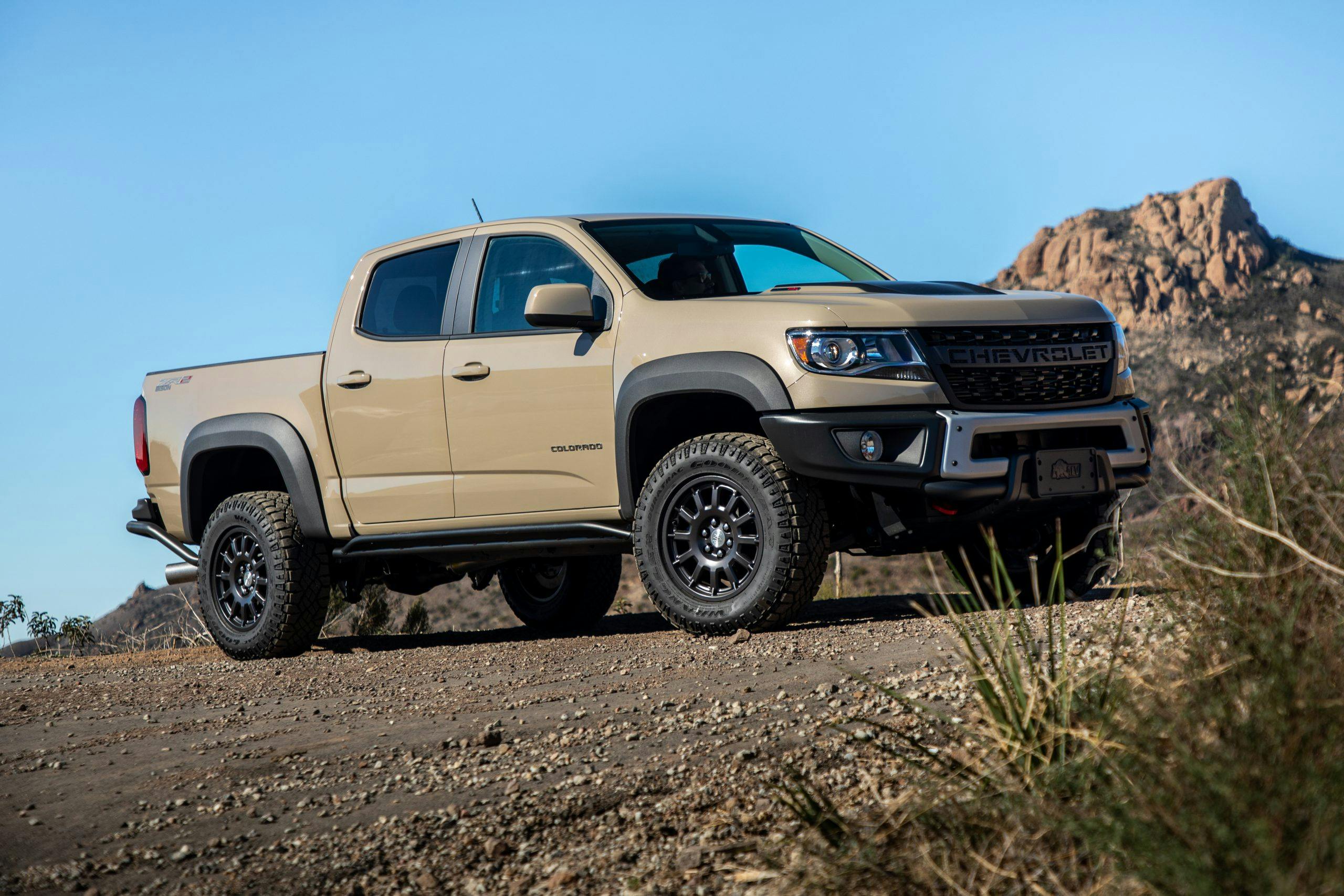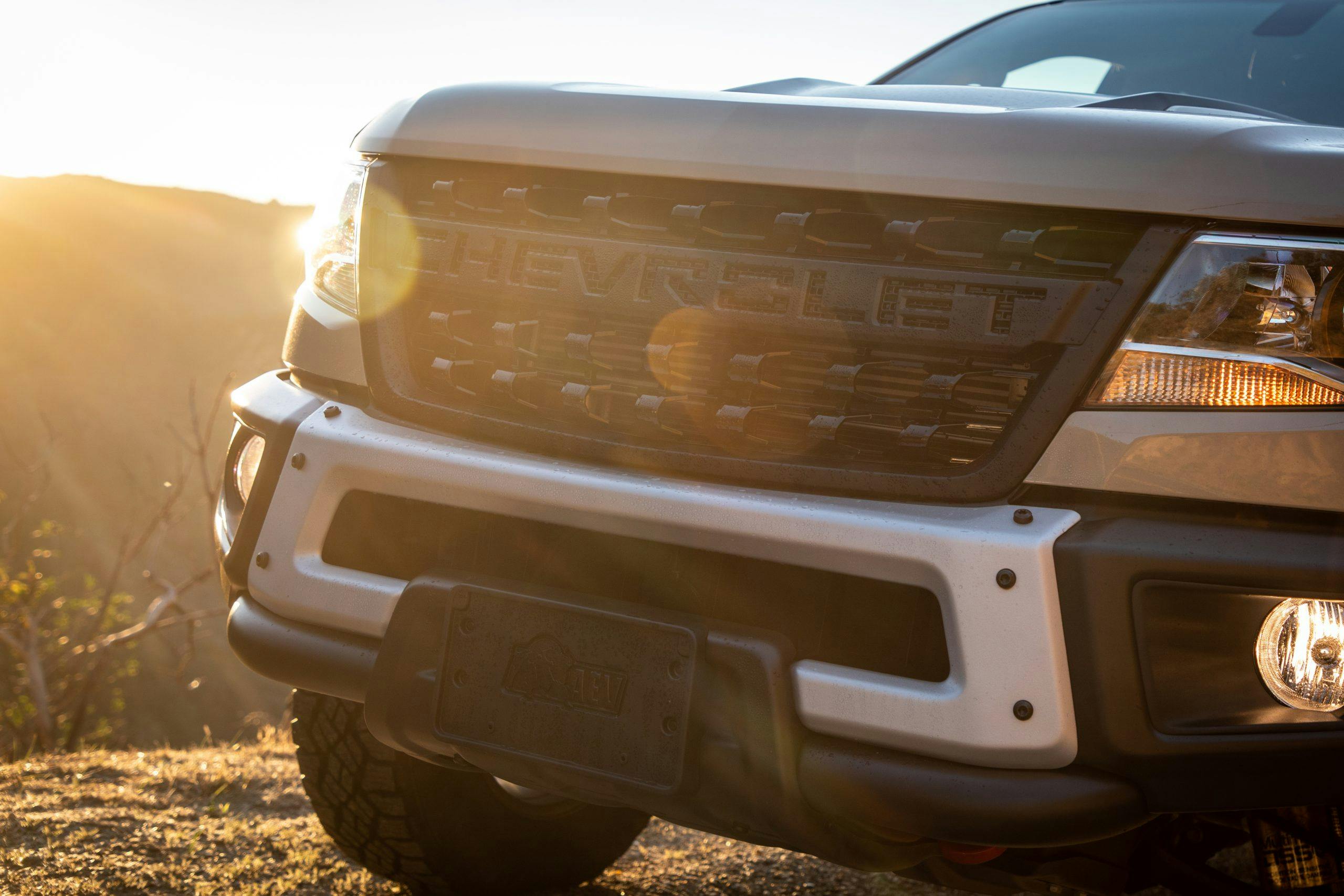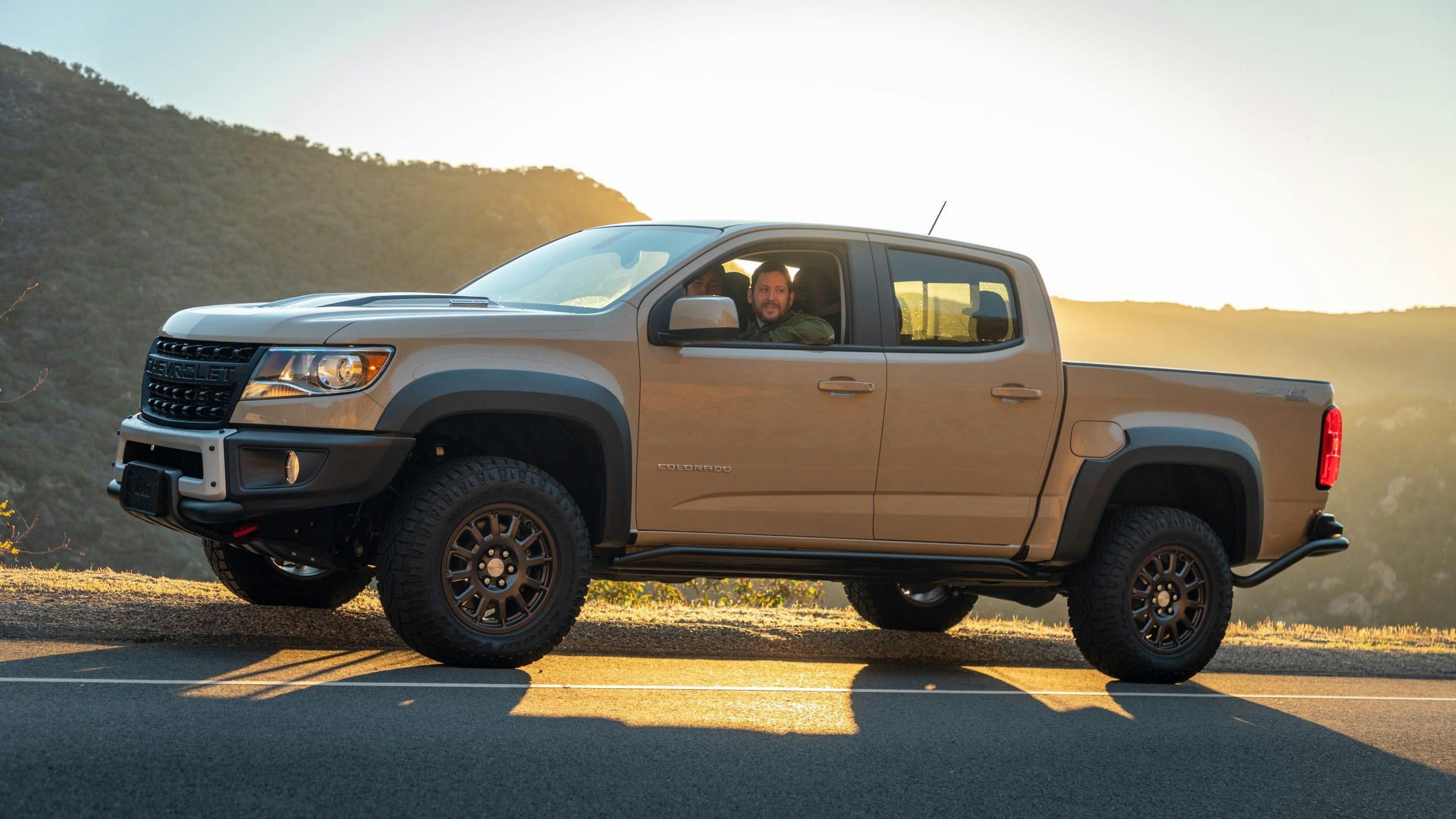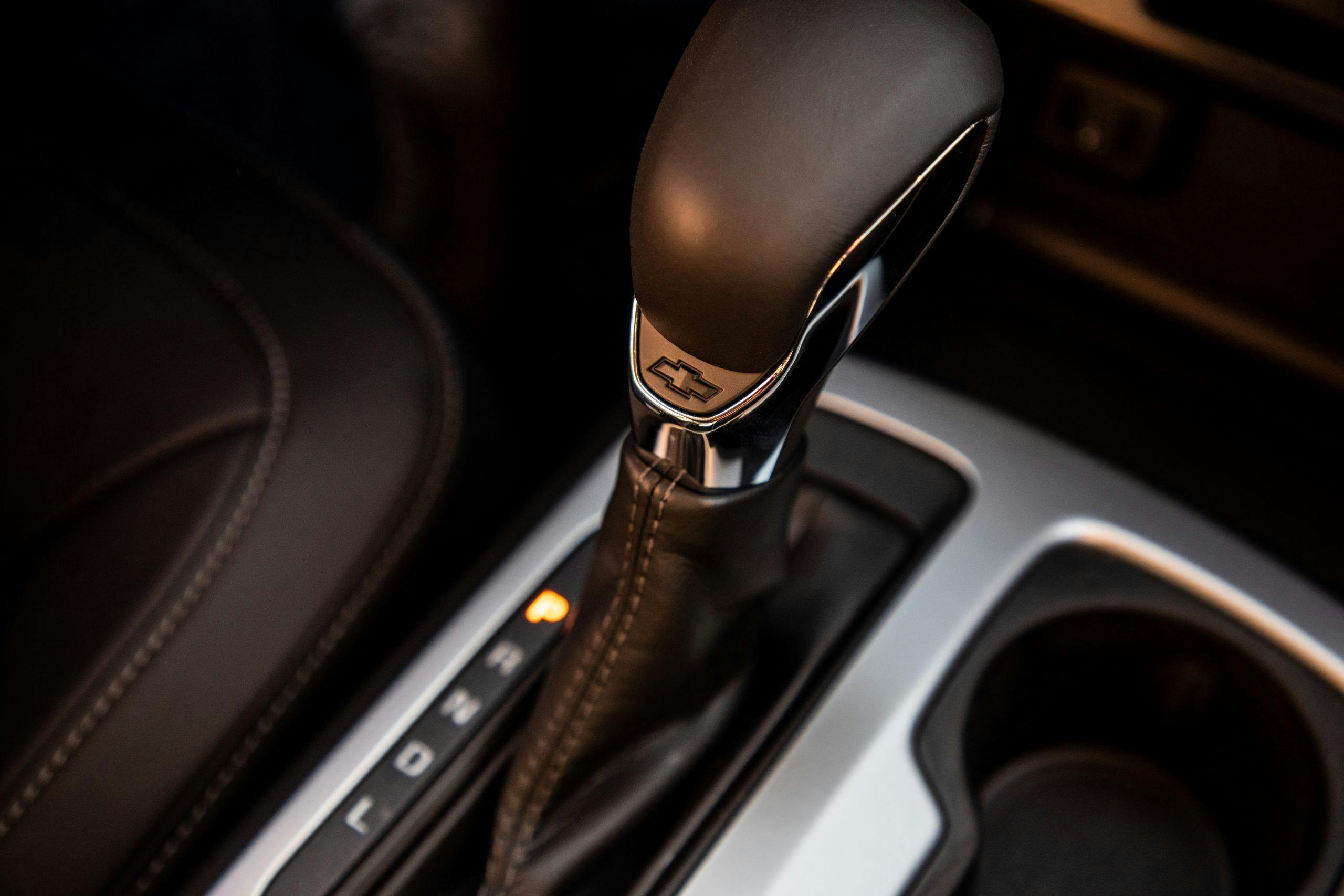Review: 2022 Chevrolet Colorado ZR2 Bison
I assure you, this was not intentional.
We did not flog an off-road truck on Malibu’s twistiest roads for precious Internet clicks. Nor did we do it as a stunt, or for the sake of sheer stupidity. The initial plan was to spank (and review) a new Corvette on those mountain paths. Then, 30 minutes after senior editor Sajeev Mehta retrieved our test Chevy from GM’s Los Angeles press fleet, the car bowed out. A factory coolant-tank problem reared its head, overheating the engine.
Rather than leave us high and dry, Chevrolet was kind enough to provide a replacement—the Colorado ZR2 Bison seen here.
Naturally, we carried on with our plans. Partly because we had flown the entire staff of this website to California for a day of testing vehicles, and we had work to do. And partly because an off-road truck on mountain roads seemed like… fun.
To say the Bison was the wrong tool for the job would be an understatement. This is a 5000-pound, mid-size pickup truck with enough off-road upgrades to tackle the Darién Gap. Next to an ordinary Colorado, the ZR2 offers a track 3.5 inches wider, two extra inches of width, and two more inches of height. It carries high-tech spool-valve Multimatic dampers at each corner, and the standard steel control arms have been exchanged for tougher cast iron units. The differential is a new and heavier-duty unit. The tires are beefy Goodyear Wrangler Duratracs, and our $54,940 test truck came fitted with the optional 2.8-liter Duramax diesel four ($3720).

With all of that kit, the ZR2 would have been more at home crawling up and down Malibu’s craggy hills than traversing them on pavement. Especially since our test truck included the Bison package ($5750), which brings rugged add-ons from the off-road experts at American Expedition Vehicles (AEV): fender flares, boron-steel skid plates for the differentials, steel bumpers, attachment points for fog lamps and a winch, rear recovery points, tubular armor built into the bed corners, and AEV-exclusive wheels.
In no universe is a ZR2 Bison meant for spirited driving on canyon roads. At the same time, it didn’t completely fall on its face.
Prior to this drive, senior editor Brandan Gillogly spent a good chunk of time off-road with another Bison, enough to know that the truck is borderline bulletproof in sane use on just about any terrain. That said, given that this is a purpose-built dirt package—and a body-on-frame pickup truck—the Bison comported itself shockingly well on the twists, turns, and elevation changes of our test route. The engine’s performance was particularly surprising.
“Even though it’s so down on peak power compared to the standard V-6, I couldn’t believe the diesel was so much fun to drive,” said Gillogly. “The six-speed automatic is suited to an engine with 369 lb-ft of torque across such a broad curve. The whole powertrain just felt rock-solid.”
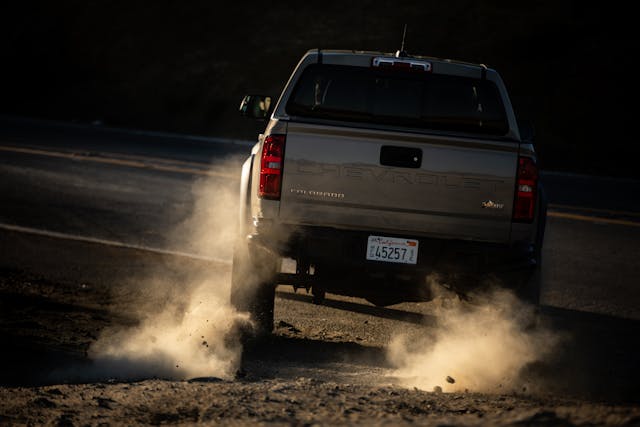
Admittedly, part of the fun of wailing on a lifted, off-road-tired, 186-hp truck is how hard you work to maintain speed—a phenomenon not unlike the one editor-at-large Sam Smith recently experienced on these very roads with a humble Toyota Corolla. Heading uphill, the Colorado essentially required full throttle to build any momentum. Throttle tip-in gives a beat of hesitation, followed by a whoosh of turbo noise, then, finally, gradual acceleration. Just as this process begins it seems to taper, with the diesel running out of steam at high rpm. A Corvette small-block, it is not.
That said, the engine is not the star of the Bison show. That honor goes to the suspension, which somehow manages to keep the mass of this six-foot-two behemoth in check. The technology inside those spool-valve dampers made its production debut on the Aston Martin One:77 in 2009, then went on to underpin track dynamos like the Camaro Z/28, the Ford GT supercar, and the Mercedes-AMG GT. In the Bison, the result is remarkable composure regardless of terrain or shock-piston speed. Even at full tilt, knobby tires howling into the California sky, the truck felt predictable and fun.
“Those dampers are superheroes out here,” Mehta observed. The big thing, we noted, was how the Chevy managed to maintain wheel control, especially in long sweepers, where the truck was up on the tire and at significant compression. Hucking a dirt-focused truck through a fast pavement corner sounds insane, but in this case, it simply didn’t feel that way.

Not that the Bison didn’t look insane, especially to oncoming traffic. One does not normally witness a mud-colored crew-cab truck on 31-inch tires attempting to keep corner pace with Miatas and hatchbacks. One of the Chevy’s neat tricks is how it manages to look aggressive without veering into the realm of ungainly cartoon—a balance the Jeep Gladiator Rubicon, for example, fails to achieve. This is not a vehicle that will lure in customers solely on design. (That talent lies with the most stylish rig in the segment, the Tacoma TRD Pro.)
Inside, the Bison is Colorado business as usual. The interior is functional, if somewhat mundane, but there’s little to complain about. The gauges are simple and legible. Long trips present no cause for concern in those all-day-comfy leather seats, and an embossed AEV headrest logo adds a subtle splash of personality. The switchgear is fat and chunky, easy to find and manipulate with your eyes on the road, and everything is within easy reach. The center screen is a decent size, and Apple CarPlay comes standard. There’s even a physical key, which you insert into a column-mounted ignition cylinder and… wait for it… turn!
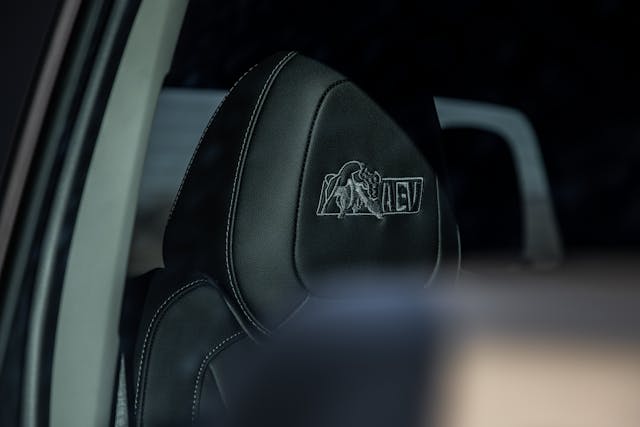
Naturally, the Colorado’s bed was a popular hangout spot for our staff as we refueled our bodies with snacks and water. With those big mirrors and a crystal-clear backup camera, the truck is relatively simple to maneuver in parking lots and garages. It handles better than a Wrangler and feels more planted on the freeway than a Bronco. A supremely off-roadable—but livable—truck at this price point is a real achievement.
There are a few weaknesses here, none of them deal-breakers. For one, rebound control over bumps could be better. “If you go in thinking this is a small-scale Ford Raptor,” associate editor Nate Petroelje noted, “you’re going to be disappointed. It doesn’t float over bumps the way the Raptor does, at any speed.”
If that sounds like a knock, remember that the F-150 Raptor is around $20,000 more expensive than the Bison. A relatively affordable compact truck that feels like it plays in the same league as the far costlier class champ? Read that as compliment.
Taking a vehicle far out of its element has a way of exposing flaws. In this case, canyon carving highlighted the ZR2 Bison’s biggest strength: versatility. No, it’s not the adrenaline mainline I was craving from the Corvette. Our loaner car’s issues aside, the eighth-generation Vette is that rare General Motors effort that feels as if it was built with the full force of brilliant engineers, with almost no meddling from the bean counters. The Bison feels similar, and it deserves your respect.
Not to mention that the shoe doesn’t really work on the other foot. Can you imagine America’s Sports Car braving a rock-strewn trail?
***
2022 Chevrolet Colorado ZR2 Bison Crew Cab
Price: $51,145/$54,940 (base/as-tested)
Highs: Surprisingly practical for daily use, reasonably priced, a suspension sprinkled with Multimatic magic dust.
Lows: Plenty of highway tire noise. Diesel not as versatile as the V-6. Interior is showing the platform’s age.
Summary: A wonderfully engineered off-road weapon capable of pleasant surprises, whether on or off the trail.

